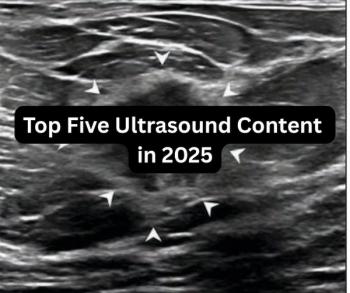New research suggests that right ventricular myocardial strain may provide significant prognostic utility in predicting heart failure.
For the retrospective study, recently published in Radiology: Cardiothoracic Imaging, researchers reviewed cardiac MRI data from a general United Kingdom population of 45,700 participants (mean age of 65) with a median three-year follow-up period. There were 248 heart failure events in the cohort, according to the study.
Univariable analysis from the study revealed that lower absolute right ventricular global longitudinal strain (RV GLS) and right ventricular global circumferential strain (RV GCS) were linked to 34 percent and 37 percent higher likelihoods, respectively, of heart failure. The study authors also noted that lower right ventricular global radial strain (RV GRS) was associated with a 71 percent hazard ratio for increased heart failure.
In the multivariable analysis, the researchers found that lower RV GLS was linked to a 16 percent higher likelihood of heart failure.
“Although our study was conducted in healthy individuals, our findings highlight the potential for integrating RV strain markers into standard cardiac MRI protocols, similar to how tricuspid annular plane systolic excursion is used as a clinically useful marker of RV function in routine imaging, particularly in conditions that place an increased burden on the (right ventricular), where subtle changes or early deterioration in function may not be detected by crude assessments of function, such as by (right ventricular ejection fraction),” wrote lead study author Sucharitha Chadalavada, MBBS, BSc, Ph.D., who is affiliated with the William Harvey Research Institute at the NIHR Barts Biomedical Research Centre at the Queen Mary University of London in the United Kingdom, and colleagues.
Three Key Takeaways
• RV strain adds independent prognostic information for heart failure (HF).
Lower right ventricular global longitudinal strain (RV GLS) on cardiac MRI remained a significant predictor of heart failure even after multivariable adjustment, with a 16 percent higher likelihood of HF.
• Multiple RV strain metrics show strong univariable associations with HF risk. Reduced RV GLS, RV GCS, and RV GRS were each associated with substantially increased heart failure likelihood, highlighting the sensitivity of RV strain to early dysfunction.
• Cardiac MRI–derived RV strain may offer certain advantages over echocardiographic assessment of RV strain.
MRI avoids acoustic window limitations, reduces operator dependence, and provides more reproducible measurements. Incorporating RV strain indices into routine cardiac MRI protocols may improve detection of subtle early RV impairment.
While acknowledging the wider use and accessibility of echocardiography for assessing myocardial strain, the study authors noted key advantages with cardiac MRI.
“ … The reliance of echocardiography on patient and operator factors can result in poor acoustic windows, making endocardial border delineation challenging and subsequently leading to unreliable measurements. Cardiac MR images overcome the requirement for good acoustic windows and large interoperator variability, and have superior reproducibility compared with echocardiography,” emphasized Chadalavada and colleagues.
(Editor’s note: For related content, see “FDA Clears Updated AI Software for Generating Inline Mapping with Cardiac MRI,” “The Reading Room Podcast: A Closer Look at Remote MRI Safety, Part 1” and “Stroke MRI Study Assesses Impact of Motion Artifacts Upon AI and Radiologist Lesion Detection.”)
In regard to study limitations, the authors acknowledged a lack of specific data on the etiology or severity of heart attack in the cohort, limited ethnic diversity and utilizing one type of cardiac MRI scanner.





























